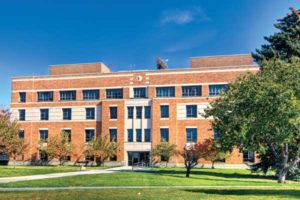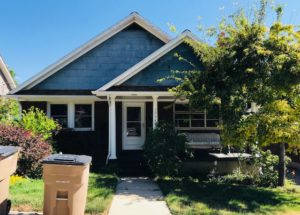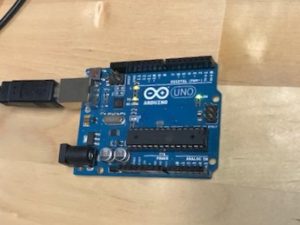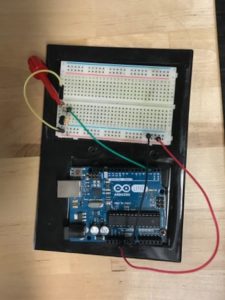My name is Lexie Gardner and I am one of the interns from Telluride, Colorado. I, along with Spencer Keating (also from Telluride), am interning under Dr. Brian McPherson at the Civil and Environmental Engineering department at the University of Utah.
We are working closely with him and the rest of the Carbon Science & Engineering Research (CSER) Group in developing a sustainable and effective way to capture and store carbon dioxide in reservoirs in the ground.
I arrived in Salt Lake City on Saturday, June 16th and spent the weekend exploring the city and getting settled into my new home. I am staying with Valerie Green, who works at the University, and her daughter, Nayra, for the summer.
Monday was my first day and luckily, it did not begin until noon. We met with Brian and the research group for lunch then went back to the lab to learn the basics of what we will be working on. We ended the day by assembling some tables that had to be built for Dr. McPherson’s new classroom space.
Tuesday morning we arrived at the office and finished assembling the tables. That afternoon, we were tasked with a new project. Spencer and I researched the difference between Wi-Fi, Bluetooth and Radio Frequency (RF) signals in hopes of developing a communication network to transmit data from sensors in the field to a central hub where the data would be processed. Our findings prompted a discussion of how we could create a wireless network using Arduino Boards to capture and transmit data. Arduino Boards are mini control boards that have the ability to facilitate tasks through coding that has been uploaded onto the microchip.
Wednesday, Brian was out of the office so we worked with Trevor, a post-doctorate researcher, on furthering our knowledge of the Arduino boards and gathered a list of materials we need to complete our project. Spencer and I canvassed the campus area around the Civil and Material Engineering building for suitable places to put our Arduino Boards once we had them set up for data transmission. We decided on using Xbee communication shields that attach to the Arduino Boards to establish communication between the boards when they are in the field.
Thursday, our real work with the Arduino board began. We decided to use a temperature sensor for our test round, primarily because we had access to one, but also because we knew how it operated. After learning the basic set up of the circuit we had to make,
Spencer and I built it with only a few mix-ups that were easily corrected. In the end, we had a fully functioning temperature sensor that accurately reported the temperature of the room. Our next job was to add a timestamp to the data. This was much more difficult as there was no previously existing code that would correctly run this on the Arduino board. After hours of research and trial and error, we got our temperatures to report with a basic version of a timestamp.
Friday we arrived at the office and worked with Eric on the porosity and permeability of rock core samples. To do this, we took the weight of different rock samples, calculated their volume and density, then placed them on a water-soaked sponge. Every two minutes we weighed them and measured how far up the rock core samples the water had traveled in that time. Using this data we were able to calculate the porosity of the rocks. This is useful in carbon sequestration as the greater the porosity of a rock, the more space it has to store CO2 without the potential for fracturing and releasing stored CO2. We then worked with Aaron on his fieldwork involving vents on top of the Student Union building. Using his equipment, we were able to see the fluctuations of CO2 concentration as the air came out of the vents as well as the velocity that the air was exiting at. I had Friday afternoon off so I walked back to my house and hung out with Nayra before heading out to dinner.
When I began working this week, I was very intimidated as most of the researchers we are working with have their doctorate degree. However, I have begun to embrace this amazing opportunity, as I probably will never be surrounded by this many post-doc researchers again.
Saturday, Nayra and I attended a Youth Leadership and Activism Conference sponsored by Racially Just Utah. Coming from the small town of Telluride, it was amazing to hear about the many paths that these students have taken as they embark on their journey of social activism in their communities.
I am so incredibly grateful to the Pinhead Institute, Dr. Brian McPherson and the CSER Group for making this possible and to Valerie and Nayra for hosting me! This week has flown by and I am so excited to see what the coming weeks will bring!





Thanks for the update Lexie!
Grandpa and I really enjoyed reading your blog and feel so fortunate to
be able to experience your thoughts on your journey there.
Keep up the good work and know we are looking forward to each and
every blog!
Lexie, what cool things you are being exposed to. Thanks for explaining them in detail. I am sure you have learned so much through this experience.